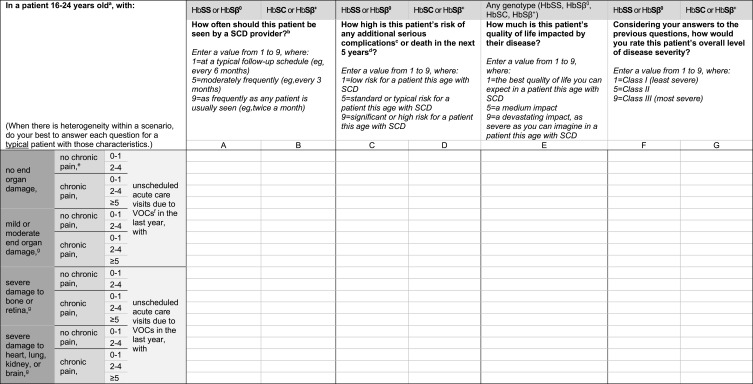Figure 1.
Example rating form of patient scenarios. Each cell represents 1 patient scenario. The table is read from top to bottom and left to right. For example, the first cell in column A1 reads: “In a patient with no end organ damage, no chronic pain, 0–1 unscheduled acute care visits due to VOCs in the last year, with HbSS or HbSβ0, how often should this patient be seen by a SCD provider?” aThis table was replicated for each patient age group: Patient <8, 8–15 years old, 25–40 years old, >40 years old. Young children might have no history, so the classification system might not be as applicable. bA SCD provider includes any clinician treating SCD and its primary consequences (eg, hematologist or pulmonologist). cAdditional serious complications include end organ damage, sepsis, or other. dRisk of complications or death in the next 5 years for patients ≥16 years old and next 10 years for patients <16 years old. eChronic pain defined as ongoing pain present on most days over the past 6 months.12 fAcute care includes unscheduled office visits, ED visits, day hospital visits, and hospitalizations; VOCs include pain, priapism, acute chest syndrome, splenic sequestration, and hepatic sequestration. gRefer to Table 1 for definitions of end organ damage provided.
Abbreviations: VOC, vaso-occlusive crisis; SCD, sickle cell disease; ED, emergency department.

